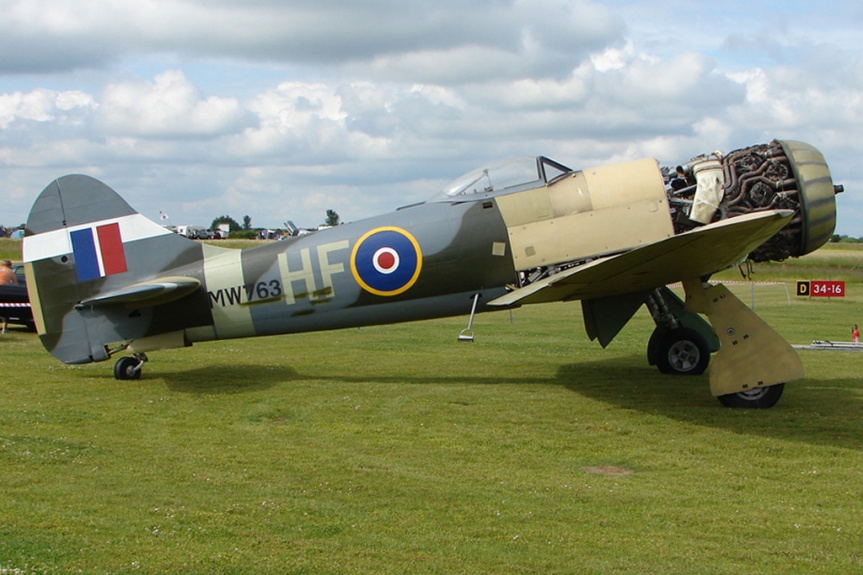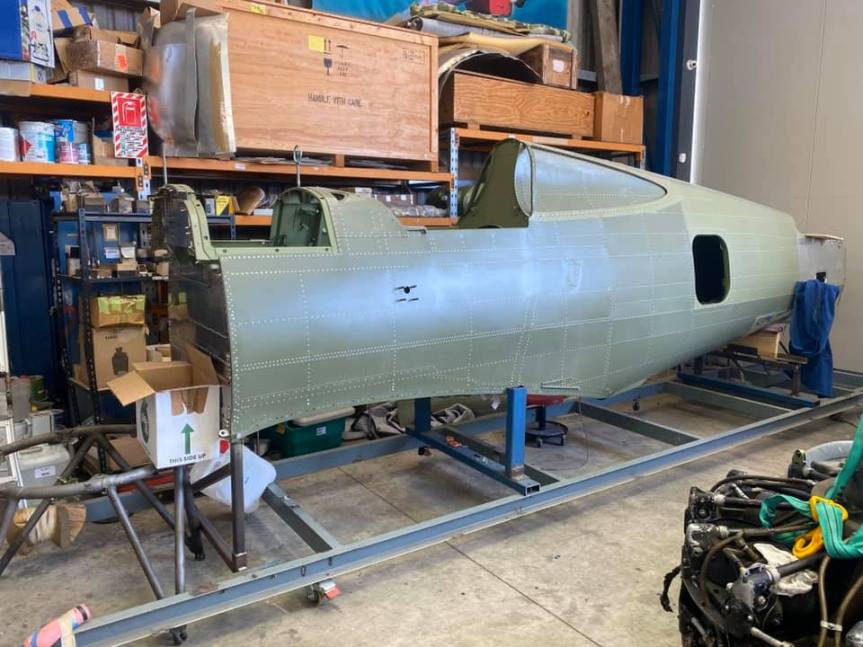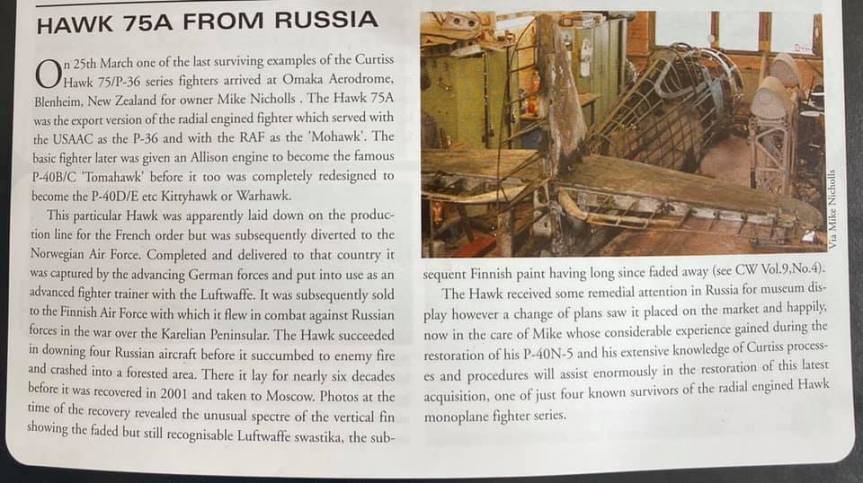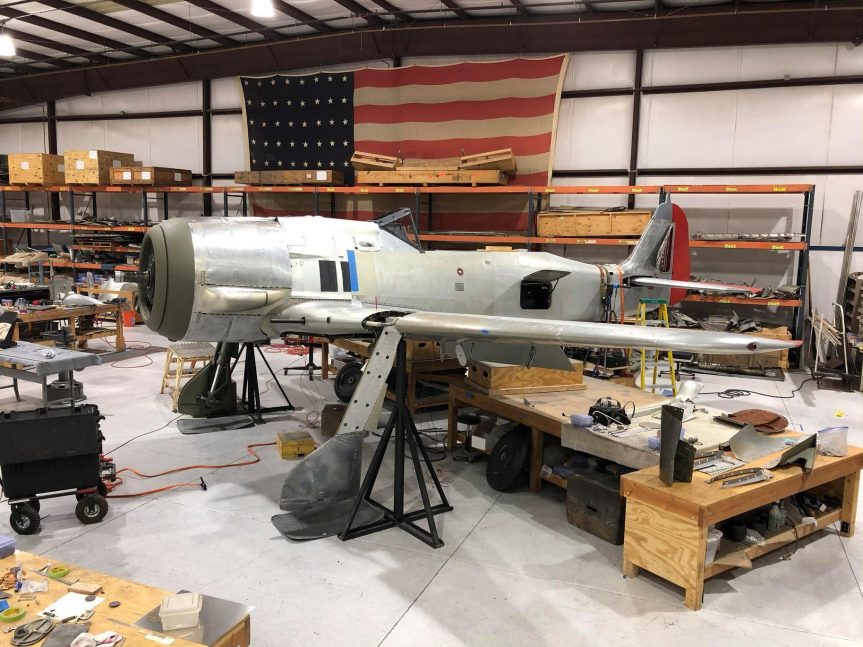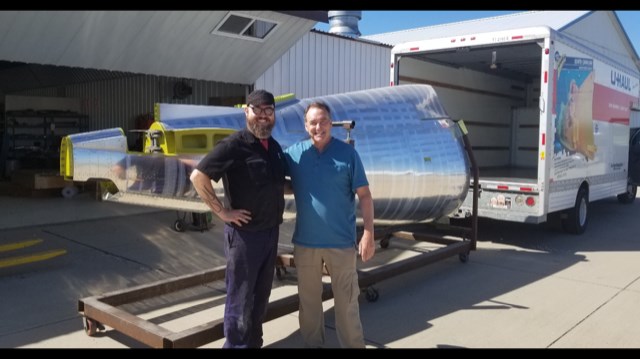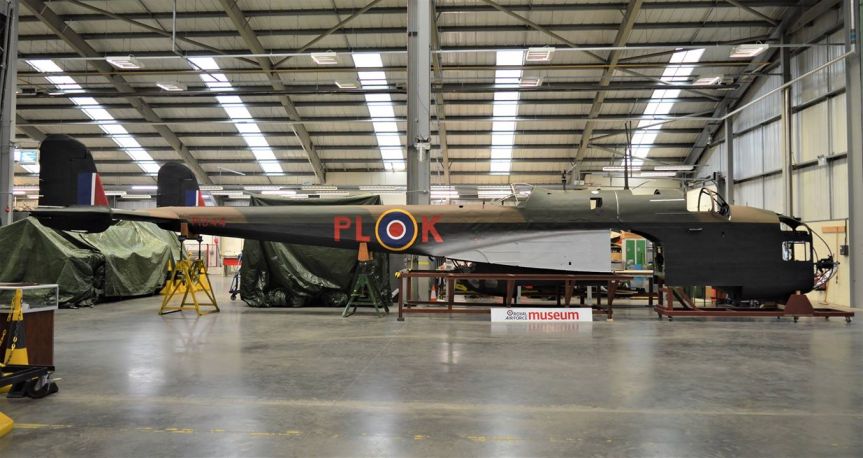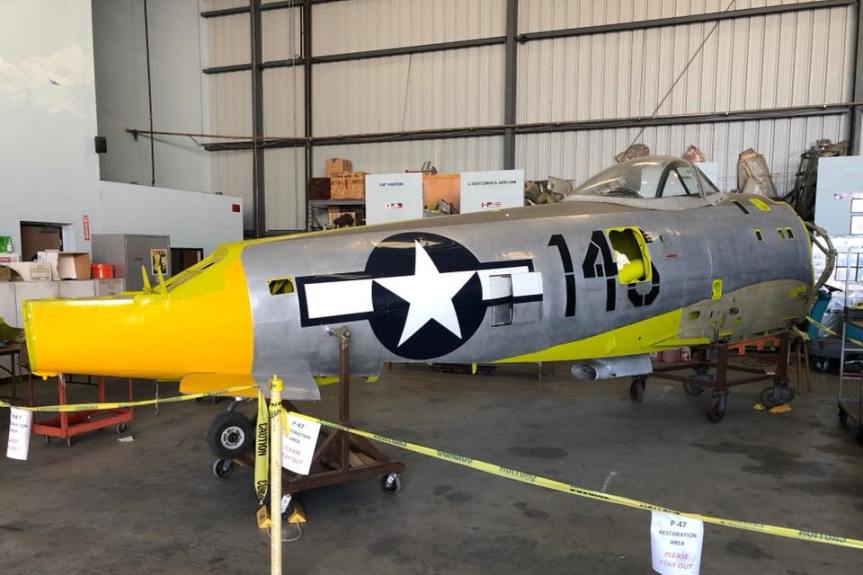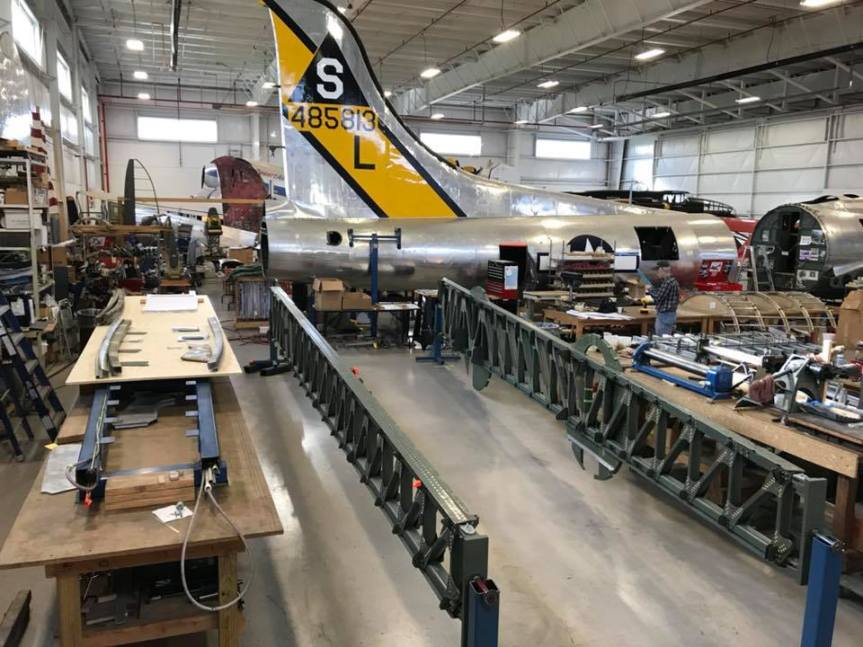Great work by GossHawk Unlimited in restoring this aircraft!
Air Classics recently posted this on their Facebook Page:
“PLANE SPEAKING #6: With Memorial Day 2020, we are facing a very different America compared to the same time last year. Still, time moves on. Nicholas A. Veronico has been a Challenge Publications’ valued contributor for many years. Nick is the author of numerous historically-significant books as well as hundreds of articles and a recent road trip took him to GossHawk Unlimited where he was able to view the fantastic progress on the Collings Foundations’ Focke-Wulf Fw 190. I have known Dave Goss for decades and I personally can’t think of a better shop to have undertaken this extremely complex project. When it comes to the restoration of WWII German fighters, Dave is the expert and his experience goes all the way back to when he brought the “long-nose” Fw 190D back to life for the late Doug Champlin — one of the innovators of historic aircraft preservation and we certainly could use a few more people like him today. As AIR CLASSICS’ readers know, this fighter was eventually acquired by Paul Allen. Before his untimely death, I had a chance to speak with Allen on the 190D: “I view that aircraft as one of the highlights of my collection since it is close to the ultimate in German piston-engine fighter development. As much as I would like to have seen the aircraft fly, I realize its rarity and made the decision to keep it on the ground.” Dave and the GossHawk team would go on to complete Paul Allen’s Fw 190A and I was on hand to see Steve Hinton take the Luftwaffe fighter up on its first post-restoration flight. I must say that was an emotional thrill — especially when one realizes the huge amount of talent and funding to finalize such a project. GossHawk went on to complete a great deal of the restoration work on the Paul Allen Me 262 before the project was moved to Washington. As had been previously reported in AIR CLASSICS, a lengthy overhaul process returned the two Jumo turbojets to flight status. After completing taxi tests, the plane was moved to Moses Lake where Hinton and his team along with FHCAM members continue working on the jet fighter prior to a first flight. An engine had to be removed and sent back to the restorers following some minor problems. It must be remembered that during WWII, each of these Jumo engines was basically hand-built under constant Allied bombings. Also, a great deal of work was performed by slave labor. Each engine also had a very short TBO (time between overhaul). But, for the moment, let’s get on to Nick’s report and photos covering White 1 and the incredible work going on at GossHawk Unlimited — the world’s only restoration shop to return two Fw 190s to flying condition.
WHITE 1 UPDATE BY NICHOLAS A. VERONICO
The Collings Foundation’s original Focke-Wulf Fw 190F-8 is making steady progress as the restoration enters the home stretch at GossHawk Unlimited in Casa Grande, Arizona. This aircraft was built in June 1944 as Werke number 93182 and saw service in Norway with Staffel III/Jagdgeschwader 5 (III./JG 5 or Squadron III, Fighter Wing 5) wearing the markings of “White 1.”
White 1’s last combat engagement was on 9 February 1945, in what is known as the Battle of Fordefjoird, when Royal Air Force Coastal Command Beaufighters escorted by RAF Mustang IIIs came hunting a German convoy of eleven ships hiding along the coast. Nine Fw 190s from JG 5 rose from the Luftwaffe’s base at Herdla, Norway, to do battle with the Beaufighters; the attacking force comprised of aircraft from 404 Squadron RCAF, 455 Squadron RAAF, 489 Squadron RNZAF, and 144 Squadron RAF. The Beaufighters’ escorting Mustangs were from No. 65 (East India) Squadron based at Banff, Scotland.
During the engagement, White 1 was flown by Unteroffizier Heinz Orlowski, who quickly downed one of the Beaufighters. Orlowski was then attacked by a Mustang III (P-51C, RAF serial HB836) flown by W/O Cecil C. Caesar. Orlowski bailed out of the stricken Focke-Wulf at only 300 feet above ground level, which was too low for the canopy to fully deploy. His fall was cushioned by deep snow. W/O Caesar was mortally wounded in the engagement with Orlowski, crashing into a wooded area nearby. Caesar was the only RAF fighter loss for the mission while JG 5 lost six Fw 190s.
White 1 was located by the Norwegian Aircraft Historical Society and the West Norway Aircraft Historical Group, and after sponsorship was arranged the fighter was recovered by the Royal Norwegian Air Force Aircraft Museum in 1983. Ownership passed to the Texas Air Museum and then to Mark Timken’s White 1 Foundation. Acquired by the Collings Foundation, the project was moved to GossHawk Unlimited where the restoration has made outstanding progress to return the aircraft to as nearly original condition as possible.
For this project, an original BMW 801D engine was found in Norway, still in the box. The engine was overhauled by Mike Nixon’s Vintage Aero, new hoses and electrical bundles were fabricated and the radial was hung on the airframe in late 2019, to enable completion of the extremely complex oil tank installation and to form the cowling. “Forming the cowling for White 1 was a group effort,” said Lindsey Goss Gard, vice president and general manager of GossHawk Unlimited. “Everyone in the shop had a hand in forming and fitting the cowling to make it fit perfectly. Then we installed the oil tank built up by Randy Carlson of Carlson Metal Shaping in Fargo, North Dakota, and Ashley Ezell of American Aero Services in New Smyrna Beach, Florida. After that, we installed the overhauled radiator when it was returned from Replicore in New Zealand.”
The BMW 801D engine is a fuel-injected, 14-cylinder, two-row radial with a gear-driven, single-stage, two-speed supercharger. On takeoff, it develops 1600-hp at 2700-rpm. On 18 March 2020, the engine and propeller were returned to Tehachapi, California, for testing by Mike Nixon and his staff. Vintage Aero is the only shop that has worked on the BMW 801D engine, having restored the BMW powering the Flying Heritage and Combat Armor Museum’s Fw 190A-5. Once White 1’s engine runs are complete, the BMW 801D will be returned to GossHawk in preparation for the Fw 190’s first flight in more than 75 years.
With the engine out of the shop, installation will soon begin on the Fw 190’s unique canopy. The canopy is at rest when closed and is forced back under tension when opened. The tension keeps the canopy locked forward, and the pilot does not have enough strength to force the canopy back during flight should he need to egress the cockpit. Focke-Wulf built a canopy ejection system for the 190, which uses a shotgun-type shell of approximately 30mm to blow off the canopy in an emergency. The system blows the canopy back far enough that the slipstream grabs it, and aerodynamically pulls it away from the aircraft. All of the parts for the canopy ejection system have been fabricated or overhauled by Cullity & Son Restorations, East Sandwich, Massachusetts. Daniel W. Cullity Jr. and his son Ryan are world-renowned for their restorations of antique firearms and have done a number of other projects for the Collings Foundation’s American Heritage Museum. Although an Fw 190 canopy ejection system was a bit out of the normal for the Cullitys, the system has been restored, tested, and is ready for installation.
White 1’s cockpit, radio and gun bays are now complete and restored back to their original wartime configuration. The cockpit uses all of the correct German instruments, and the radio bay has fully restored but non-functioning period radios. In the wing roots are a pair of demilled Mauser MG 151 20mm cannon, one on each side of the fuselage, that are original to this aircraft. The ammo boxes and ammo chutes recovered from White 1 were steel and had rusted away. What was left of the originals was used as patterns to fabricate duplicate parts. The restoration uses the original cannon bay doors, which have a blister in them because the gun breeches sit above the wing’s upper surface. The blister doors are very sturdy as pilots and ground crews needed to stand on the doors to gain access to the cockpit.
“We’re working to exacting standards, returning this fighter to its original configuration with details that most people will never see, but we know they are there,” said Goss Gard. “We just installed a [serial] number tag in the tail. All Focke-Wulfs had them, but not many people know that’s supposed to be there. We also used the correct metric RLM-45 rivets for the build. And through the Collings Foundation, Executive Director Rob Collings tracked down the original paint manufacturer, Farben Kiroff Technik in Fürth, in the German state of Bavaria, who is making a batch of paint to the original specifications and matching the colors White 1 wore while flying in Norway. Those are all little details that we hope will make this stand above other projects.””
